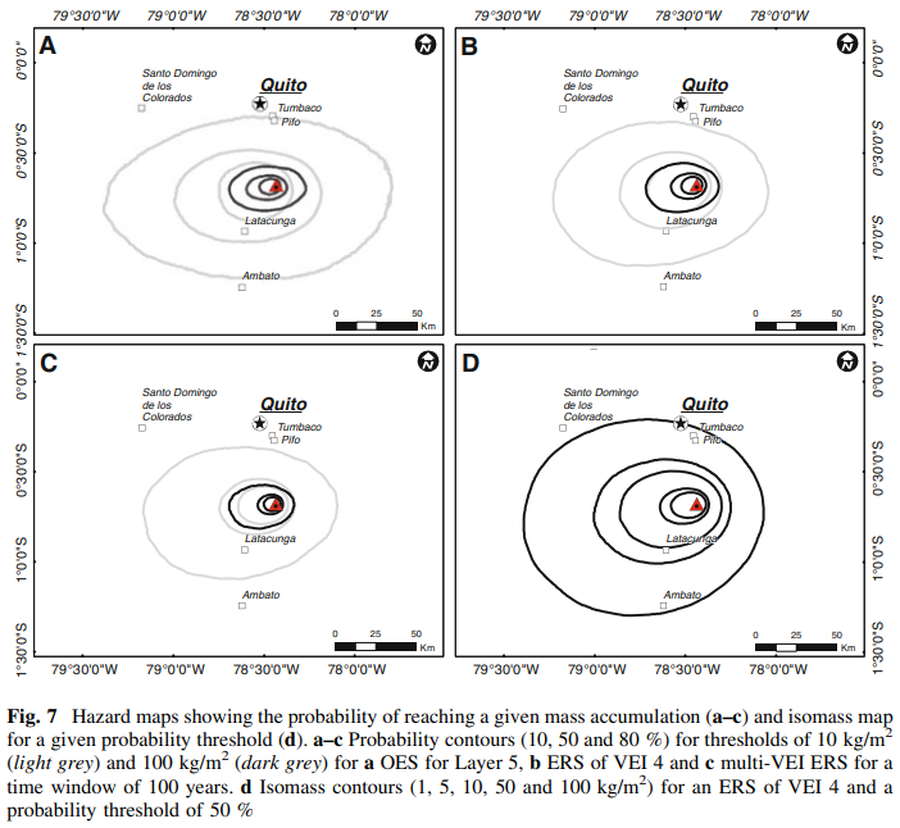Hazard maps showing the probability of reaching a given mass accumulation (a–c) and isomass map for a given probability threshold (d)
Cotopaxi, Ecuador, 2013
Figure 7 in: Biass, S., & Bonadonna, C. (2013). A fast GIS-based risk assessment for tephra fallout: the example of Cotopaxi volcano, Ecuador. Natural Hazards, 65, 477-495. https://doi.org/10.1007/s11069-012-0378-z
This hazard map is the result of scientific research and was published in academic literature.
It is presented here to serve as an example of the map type or the map-making methodology. It is NOT the official, operational map. For the current operational hazard map, please consult the proper institutional authorities.

Click on thumbnail for full-size map. We do not have copyright permission to display the full-size image. If you are the copyright holder and wish to provide copyright, please contact us at admin@volcanichazardmaps.org. If link seems broken, try the archived version.
Map Data
Map ID 3763 Hazard Process(es) Tephra fall Hazard Zone Presentation Single hazard: A single hazard process is represented on a series of small map panels of similar sizes Temporal Scale Background, or long-term, map Spatial Scale Volcano and surrounding area Publication Format Figure in a journal article Zonation Method(s) Probabilistic modeling Zonation Model(s) Tephra2 (Bonadonna et al. 2005; Bonadonna et al. 2010; Connor et al. 2011); TephraProb (Biass et al. 2016) Scenario(s) Considered Season or weather; Size, VEI, or intensity Hazard Zone Label(s) Estimated value or Hazard Impact Metric; Numeric probability Probability Definition(s) Numeric probability Purpose Scientific interest: Intended for scientific research and general scientific interest; usually published in academic journals Audience Scientists (usually in scientific publication) Language(s) English Basemap(s) Inhabited areas Basemap overlay(s) Diemsionality Planimetric (2D or map) view Color Scheme Symbols and/or lines only
